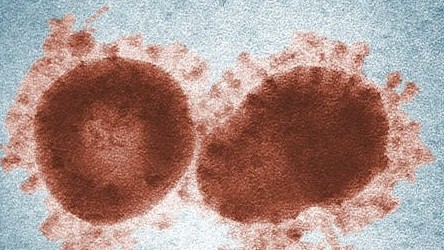Chlamydia Explained: Causes & Transmission
The infection is caused by the bacterium Chlamydia trachomatis, which targets the mucous membranes of the urethra, cervix, rectum, and throat. Transmission is almost always via unprotected vaginal, anal, or oral sex. During delivery, an infected mother can also pass the bacterium to her baby, causing conjunctivitis or pneumonia in newborns.
Symptom Check: How “Silent” Is Chlamydia?
According to the CDC, infections are asymptomatic in about 70–95 percent of women and roughly 50 percent of men. When symptoms do occur, they usually appear 1–3 weeks after exposure – by then the bacteria may have spread further.
Chlamydia in Women – Typical Symptoms & Long-Term Effects
Early warning signs (if any):
- unusual, often watery-pus-like or foul-smelling discharge
- intermenstrual or post-coital bleeding
- pain during intercourse (dyspareunia)
- burning while urinating (dysuria)
- lower-abdominal or back pain
Potential long-term consequences if untreated:
- PID (Pelvic Inflammatory Disease) – infection spreads to uterus and fallopian tubes
- Salpingitis – scarring of the tubes leading to blockage
- Infertility – reported in up to 40 percent of untreated cases
- higher risk of ectopic pregnancy, preterm birth, or miscarriage
Chlamydia in Men – What’s Different?
Possible acute symptoms:
- clear to pus-like urethral discharge
- burning or pain when urinating
- swelling or pain in the testes or epididymis
Typical complications (rare but possible):
- Epididymitis – inflammation of the epididymis with pain and fever
- prostatitis or urethral strictures
- reduced sperm quality, leading to fertility issues
- Reactive arthritis (Reiter’s syndrome) – joint, eye, and skin inflammation
Note: Even symptom-free men can transmit the infection – both partners must always be treated.
Untreated Chlamydia: Shared Risks
- chronic pelvic or lower-abdominal pain
- infertility in women; impaired fertility in men
- conjunctivitis or pneumonia in newborns
Prevention That Really Works
- Condoms – highly effective when used consistently and correctly
- Routine testing – CDC recommends yearly screening for sexually active women up to 25, and risk-based testing thereafter
- limit the number of sexual partners or agree on shared testing intervals
- clean sex toys after each use or cover them with a fresh condom
- pregnant individuals should be tested for chlamydia in the first trimester
Treatment Today – Why Doxycycline Has Replaced Azithromycin
Chlamydia is almost always curable with antibiotics. Updated guidelines favor doxycycline for seven days over a single dose of azithromycin because studies show rising azithromycin resistance and slightly better efficacy for doxycycline. True laboratory resistance to tetracyclines or macrolides remains rare.
Diagnostics & Testing Basics
Test types
- NAAT / PCR – very reliable; results in 1–2 days
- Rapid test – results in about 20 minutes, but far less accurate (screening only)
Specimen options
- women: vaginal swab (self-taken or clinician) or first-catch morning urine
- men: first-catch urine; urethral swab if symptomatic
When to Seek Medical Advice
The WHO defines infertility as the absence of pregnancy after 12 months of unprotected intercourse (after six months if the woman is over 35). Common causes include untreated chlamydia, endometriosis, and hormonal disorders.
- unexplained discharge, burning, or bleeding → get tested immediately
- new relationship without up-to-date STI status → both partners should test
- positive result → treat both partners and abstain from sex for seven days
Takeaway
Chlamydia is common, often silent – but highly treatable. Regular testing, consistent condom use, and prompt antibiotics dramatically reduce the risk of severe complications like infertility. Invest in your sexual health – prevention is far easier than treating late-stage damage.

